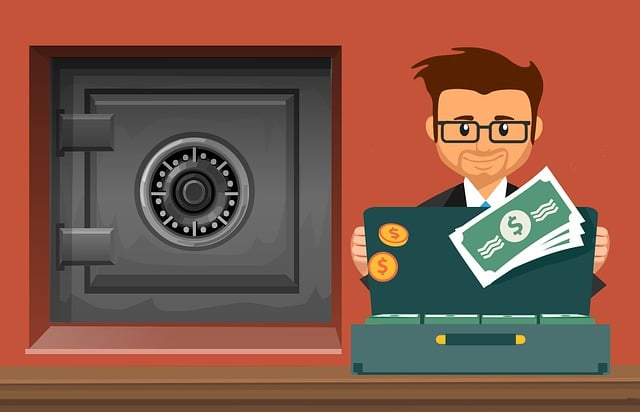DIY apartment alarm systems increasingly rely on motion detectors, with passive infrared (PIR) and microwave sensors triggering alarms upon detecting movement. Proper placement and modern wireless kits with smartphone apps enhance security and peace of mind. This guide emphasizes choosing the right models tailored to high-traffic areas and strategic installation in hallways, entry doors, and windows. Installation involves securing detectors, connecting them to a control panel, testing functionality, calibrating sensitivity, and regular battery checks. Regular testing ensures optimal performance and comprehensive security for DIY setups.
“Enhance your apartment’s security with a DIY alarm system, tailored to your specific needs. This comprehensive guide breaks down the process into manageable steps, starting with understanding the fundamentals of DIY apartment alarm systems and selecting the right motion detectors for your setup. Learn how to install and configure these sensors effectively, ensuring optimal protection.
Discover the art of testing and optimizing your DIY alarm system, making it a robust security solution. Whether you’re a tech-savvy individual or a homeowner looking for an affordable option, this step-by-step approach showcases the power of motion detectors in DIY setups.”
- Understanding DIY Apartment Alarm Systems
- Choosing the Right Motion Detectors for Your Setup
- Step-by-Step Guide to Installing and Setting Up Motion Detectors
- Testing and Optimizing Your DIY Alarm System
Understanding DIY Apartment Alarm Systems

DIY apartment alarm systems have gained popularity due to their cost-effectiveness and customization options. Unlike professional security systems, these do-it-yourself (DIY) setups often incorporate motion detectors as a core component. Motion detectors are sensitive devices that trigger alarms when they detect movement within a specified range. For DIY enthusiasts, integrating these sensors into your apartment’s security network can be a game-changer, offering peace of mind and enhanced safety without breaking the bank.
When setting up a DIY alarm system with motion detectors, it’s crucial to consider placement and type. Common options include passive infrared (PIR) sensors, which detect heat signatures, and microwave sensors that measure changes in microwaves. Proper placement ensures these devices can cover all entry points and common areas. Additionally, many modern DIY kits offer wireless connectivity, allowing for easy installation and remote monitoring via smartphone apps, making it convenient to stay alert even when you’re away from home.
Choosing the Right Motion Detectors for Your Setup

When setting up a DIY apartment alarm system, selecting the appropriate motion detectors is a key step. The right motion detector should suit your specific needs in terms of sensitivity, range, and placement. For instance, if you’re focusing on securing high-traffic areas like hallways or entry points, opt for detectors with long ranges and adjustable sensitivity settings to ensure maximum coverage without false alarms triggered by pets or air currents.
For a more cost-effective solution, consider wireless motion detectors designed for DIY installations. These devices are easy to set up, often come with rechargeable batteries, and can be placed strategically around your apartment. Additionally, many modern motion detectors offer smart features like remote monitoring through a smartphone app, allowing you to stay alert even when you’re away from home.
Step-by-Step Guide to Installing and Setting Up Motion Detectors

Step-by-Step Guide to Installing and Setting Up Motion Detectors
Motion detectors are a key component in any do-it-yourself (DIY) apartment alarm system, as they trigger alerts when movement is detected, enhancing your home security. Choosing the right detector for your needs involves considering factors like range, sensitivity, and battery life. Once selected, installation is typically straightforward and can be completed within an hour or less with basic tools. Begin by identifying strategic locations for placement—common areas like hallways, entry doors, and windows are prime spots. Ensure these areas offer clear lines of sight to capture any movement effectively. Mount the detectors securely on walls or ceilings using screws or adhesive, adhering to manufacturer instructions for optimal positioning.
After installation, connect each detector to your central control panel according to the provided wiring diagram. Test the devices by simulating motion within their range and verify accurate triggering. Calibrate sensitivity levels if needed, fine-tuning them to minimize false alarms while ensuring reliable detection. Regular battery checks are essential; most modern detectors feature low-battery indicators, making replacement easy. By following these steps, you’ll have successfully integrated high-quality motion detectors into your DIY apartment alarm system, enhancing both its functionality and peace of mind.
Testing and Optimizing Your DIY Alarm System

After installing your DIY apartment alarm system, it’s crucial to test and optimize its performance. Start by simulating real-life scenarios using motion detectors for DIY setups; trigger them with objects or remote controls to ensure they function as intended. Check each sensor’s sensitivity and adjust settings if needed to prevent false alarms while maintaining reliable detection.
During testing, pay close attention to any dead zones or areas where the alarm doesn’t register movement. Optimize your system by reconfiguring sensors, adding additional coverage, or adjusting placement to address these gaps. Regular testing and fine-tuning will ensure your DIY alarm system provides comprehensive security tailored to your apartment’s unique layout and requirements.
Creating a secure living space is now easier than ever with DIY apartment alarm systems. By understanding the basics of these systems, selecting appropriate motion detectors, and following step-by-step guides, you can effectively enhance your home’s security without breaking the bank. With proper testing and optimization, you’ll have peace of mind knowing that your DIY setup is ready to detect any unusual activity. So, take control of your safety and explore the world of DIY motion detectors for a more secure home environment.
